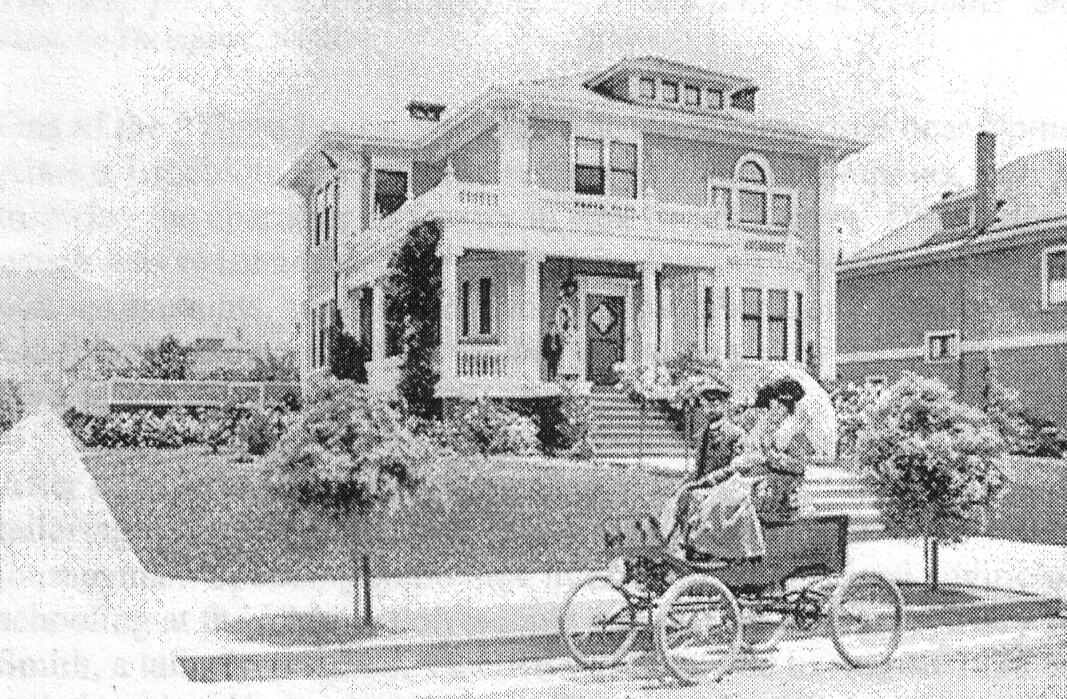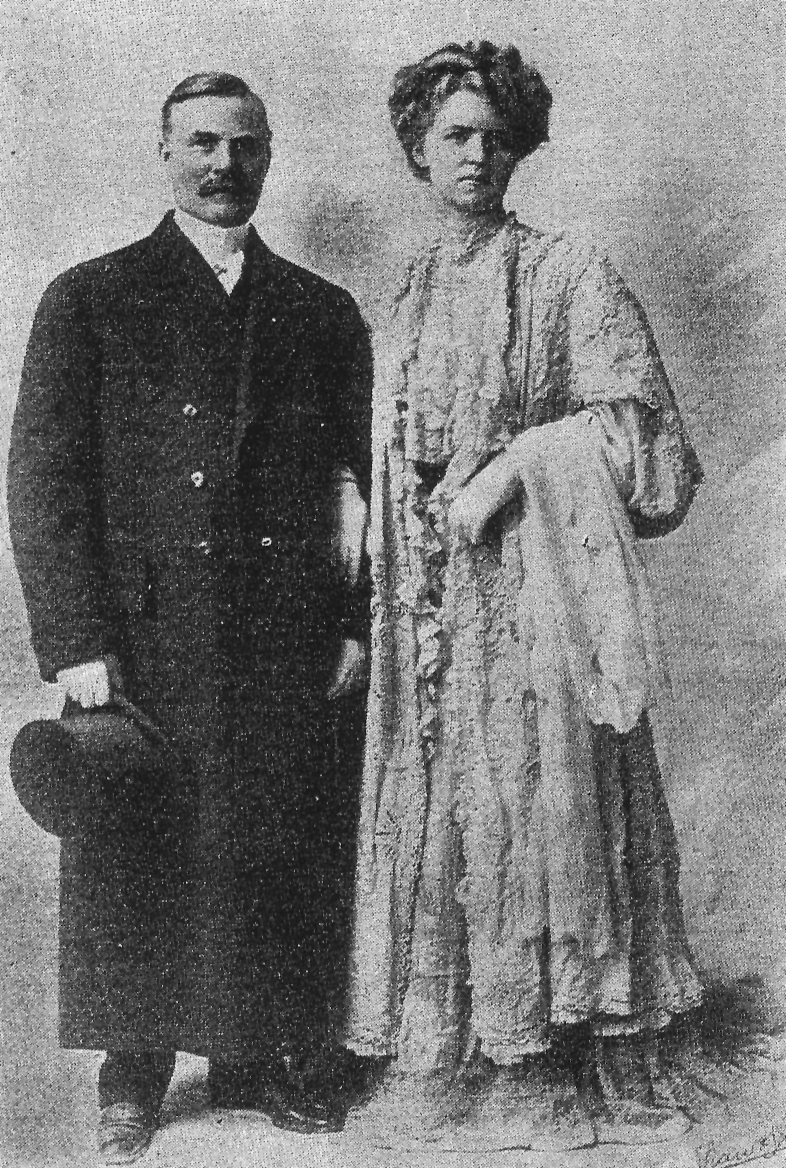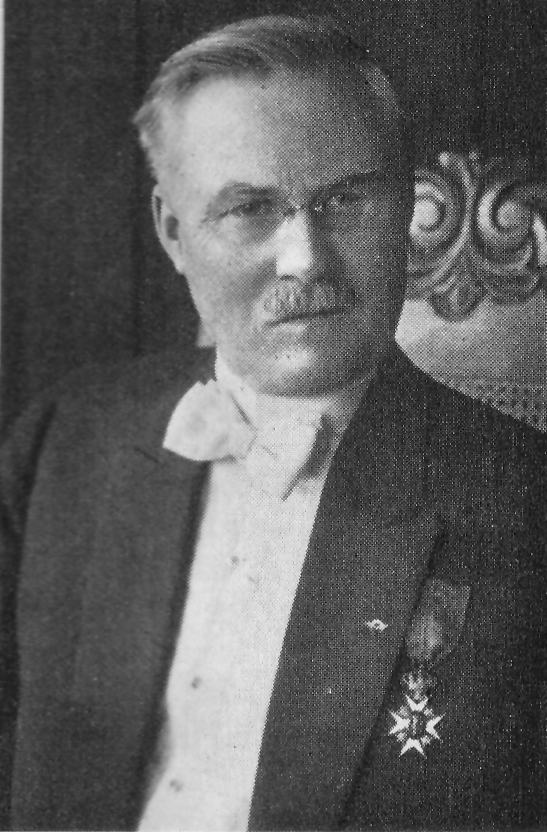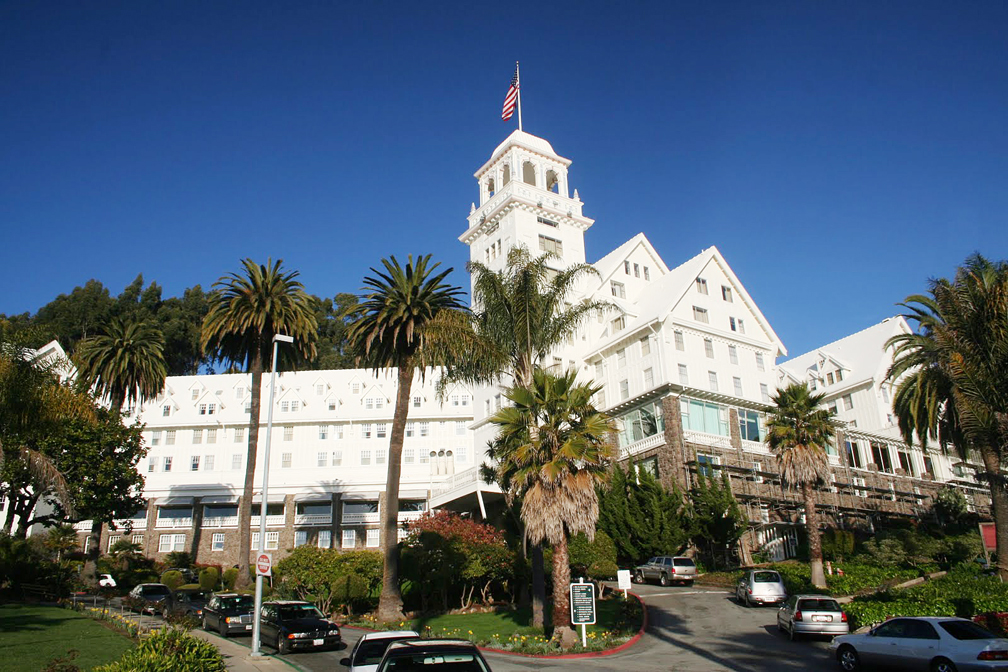The lucky Swede.
One of the classic stories of rags to riches to rags is the career of the Swedish immigrant Erik Olof Lindblom.
-
 Lindblom’s house at Hillegass & Parker Streets. Lindblom, likely with his first wife in the foreground owned one of the first automobiles in the Bay Area.
Lindblom’s house at Hillegass & Parker Streets. Lindblom, likely with his first wife in the foreground owned one of the first automobiles in the Bay Area. -
-
Erik Olof Lindblom had a legendary life, the dream of every would-be entrepreneur. He was born on June 27, 1857 in Dalarna. Erik was the son of Olof Lindblom and Brita Olofson. His father was a land owner and school teacher who lost his wealth to bonding an ill-fated dam and shortly thereafter his life. His widow was hard pressed in poverty to raise the family alone.
Erik finished his school years at the age of 14, ad for the next three years he was exposed to the mining industry near his home that was a center of iron and copper production. He then left Sweden to pursue other opportunities in Europe and finally ended up in London where he received more schooling. He was trained as a tailor and supported himself following this trade.
Erik Lindblom fell in love with his boss’s daughter, Mary Ann Smith. They were married in August 1886 and soon sailed for New York. A daughter, Brita Margaret, was born there in 1887 and a son, Olof Henry, was born in Idaho in 1890. They moved to Montana where Lindblom became a naturalized citizen, and the family eventually located in Oakland, California where Lindblom pursued his career as a tailor. -
 Lindblom with his second wife, the 27 years younger Hannah Ulrika Sadie Sparman from Oakland.
Lindblom with his second wife, the 27 years younger Hannah Ulrika Sadie Sparman from Oakland. -
-
Gold in Alaska!
The news of a potential gold strike in Alaska captured Lindblom's attention. He had taken some courses in mining while in Oakland. His fascination with the West and pioneering adventures soon set him on a path to Alaska. He hired on as a seaman on a ship bound for Alaska in 1898 and jumped ship at Grantley Harbor. He proceeded under very adverse conditions on foot to Golovin Bay. He met and joined John Brynteson, a Swede and Jafet Lindeberg, a Norwegian. The three adventurers made a spectacular strike at Anvil Creek and eventually formed the Pioneer Mining Company. Their story has been well documented and they were known as the “Three Lucky Swedes.” The Nome Gold Rush had begun.
Lindblom returned to the Bay Area in 1899 a very wealthy man. The beautiful home he purchased in Berkeley was at Hillegass and Parker streets and is now on the list of historical houses in Berkeley—it is still very elegant.
Lindblom owned one of the first automobiles in the Bay Area. His investments over the years were far flung and diverse: telephone, power and lumber companies in Washington, water and power companies in Mexico, real estate in San Diego, San Francisco and Oakland. He was involved with the Swedish Bank in Seattle and a founder of that bank in San Francisco.
His first marriage was not a lasting success and a contentious divorce lasted several years. Lindblom later married Hannah Ulrika Sadie Sparman, 27 years his junior, from Oakland, in 1907. Her father was a Swedish basket maker. They had one son, Erik.
A memorable monument to Lindblom is the beautiful and picturesque Claremont Hotel in Berkeley. The building was begun in 1906 with Lindblom as a prime stockholder. By 1914, he became the major force in its completion and the sole owner by 1918. -
 The Swedish forged copper bell - a gift from Lindblom which was sent round the Horn to San Francisco in 1910 to adorn the new Swedish Ebenezer Lutheran Church at 15th & Dolores.
The Swedish forged copper bell - a gift from Lindblom which was sent round the Horn to San Francisco in 1910 to adorn the new Swedish Ebenezer Lutheran Church at 15th & Dolores. -
Active in Swedish circles
Lindblom was a very active member of various Swedish organizations and supporter of its institutions. Some examples of his generosity and largess included the huge copper bell he ordered to be forged in Sweden, then sent round the Horn to San Francisco in 1910 to adorn the new Swedish Ebenezer Lutheran Church at 15th and Dolores. He contributed funds to help the Swedish people of Oakland construct St. Paul’s Church. After the 1906 quake and fire, the Swedish Society of San Francisco decided to build a new building for the Swedish people of the Bay Area after their old meeting place, Scandia Hall, was completely destroyed. The Society purchased a lot at 15th and Market Street and built a beautiful building—the Swedish American Hall—in unbelievably record time.
San Francisco was specifically preoccupied in cleaning up and replacing buildings in the city. Restoration was feverish. Lindblom loaned the Swedish Society $40,000 to complete the building at very generous terms. The Hall was completed by December 1907, much of the construction work done by the Swedes themselves. The Swedish Society repaid the loan in full by 1925.
The building is still owned and in use by the Swedish Society. The Hall is full of Old San Francisco charm, now celebrating its 104th year. There is a beautiful grandfather clock in the building that was given to the Society by Lindblom with the inscription, “Till Svenska Sällskap från Herr och Fru Lindblom den 1 Januari 1908.”
Lindblom served as the first president of the Swedish Club formed in 1913. This organization and the Swedish Society are still active in the Bay Area. Lindblom was appointed to be Swedish Commissioner to the Pan Pacific International Exposition in 1915 by King Gustaf V of Sweden. Lindblom later was knighted by the king being presented with the Royal Order of Vasa in the First Degree.
By the time of his death in 1928 and with the Swedish Bank failure in Seattle and San Francisco, most of his fortune was gone. He died in his beloved Claremont Hotel. There were insufficient funds for his burial expenses. He is interred in the beautiful Mountain View Cemetery in Oakland where many famous people from the early days of the San Francisco Bay Area are buried. His last resting place is in the Sparman family plot of his second wife.
A book, "The Spoilers," was written by Rex Beach about Lindblom and his Alaskan adventures. It was also a movie feature. More recently,“Three Lucky Swedes” was written by Per Eric Nordquist in Swedish in 1998.
And there is a new novel now under composition by Marit Manfredsdotter. It is to be a trilogy and not a biography, based upon Lindblom's life. The first volume is already out, titled “Sista Blicken Bakåt” (Last Look Back). It covers the early years in Sweden. This first printing has already sold out. Manfredsdotter has made at least two trips to San Francisco to gather information for her forthcoming books. Her many fans are eager to get the continuing saga of Lindblom.
He was a remarkable man. I was only 2 years old when he died so I did not know this gentleman, but as a chronicler of the activities of the Swedes in the San Francisco area, I am very impressed. -
 Erik Olof Lindblom
Erik Olof Lindblom -
By Muriel Nelson Beroza
-
 A memorable monument to the Swedish immigrant Erik Olof Lindblom is the beautiful Claremont Hotel in Berkeley. Construction begun in 1906 with Lindblom as a prime stockholder. By 1914, he became the major force in its completion and the sole owner by 1918.
A memorable monument to the Swedish immigrant Erik Olof Lindblom is the beautiful Claremont Hotel in Berkeley. Construction begun in 1906 with Lindblom as a prime stockholder. By 1914, he became the major force in its completion and the sole owner by 1918. -
-
